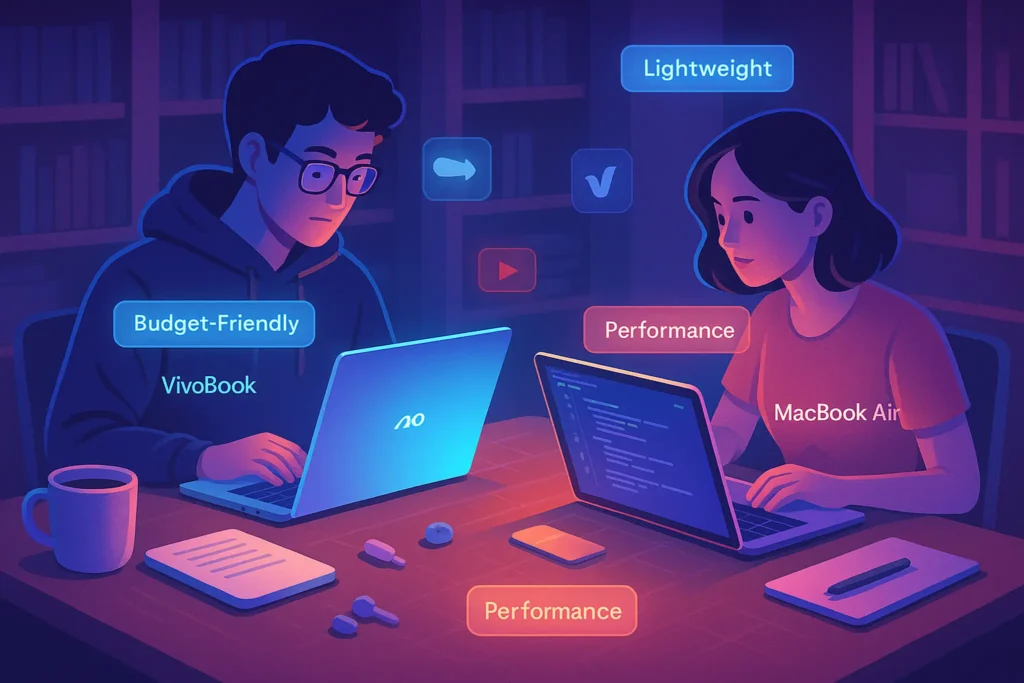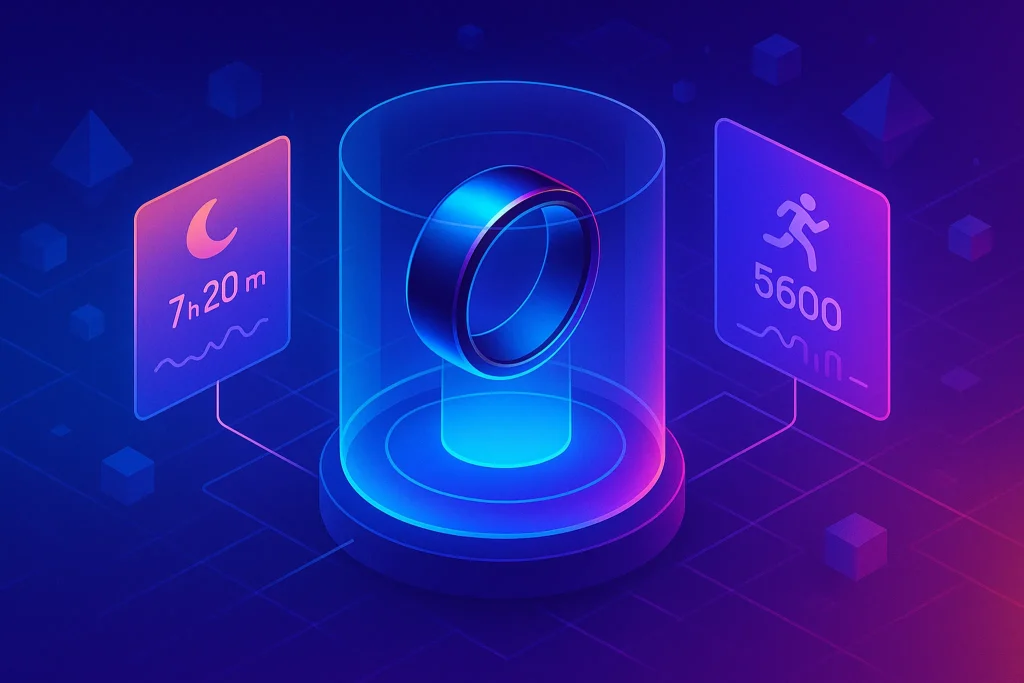Top Affordable Picks for High Performance on a Smart Budget
🎯 Who Is This Guide For?
Whether you’re a student juggling online classes and side projects, or a professional looking for a portable yet capable machine—choosing a budget laptop in 2025 can be tricky. There’s an explosion of options, specs that look similar, and flashy marketing everywhere. But real value? That’s harder to find.
This guide breaks it all down. We’ll show you the best affordable laptops for two key groups:
-
🎓 Students who need portability, solid battery life, and good performance for writing, researching, and light multitasking.
-
💼 Professionals who want solid build quality, reliability, and enough power for productivity—without overpaying.
Each laptop includes:
-
Key specs (CPU, RAM, battery life, display)
-
Best-fit user profile
-
Pros & cons
-
Smart affiliate suggestions (where applicable)
By the end of this post, you’ll have a clear short-list that fits your needs—and budget.
🧠 What Makes a Budget Laptop “Great” in 2025?
Before diving into the models, let’s clarify what separates a cheap laptop from a smart-value laptop.
✅ Reliable Processor (Intel i5 / AMD Ryzen 5 or Apple M1)
Entry-level doesn’t mean underpowered. Today’s mid-tier CPUs can handle everyday tasks like web browsing, Office apps, and even light editing or development.
✅ 8GB RAM Minimum (Ideally 16GB for Professionals)
Multitasking without lag is essential, especially if you use browser tabs + productivity apps at once.
✅ SSD Storage (Not HDD)
Faster boot, faster load times. In 2025, SSD is non-negotiable.
✅ Solid Battery Life (6+ hours real usage)
Especially for students who move between classes or professionals on the go.
✅ Display & Portability Balance
13–15.6 inch displays are ideal for most users. Under 1.5kg is a plus for portability.
✅ Keyboard & Build Quality
This often gets overlooked—but typing experience and hinge durability matter in daily use.
If you want deeper context on hardware choices, check out our Laptop Buying Guide before continuing.
📬 Want More Nerdy Buying Guides Like This?
Join our free newsletter to get weekly gear reviews, smart buying tips, and tech-for-creators updates. No fluff—just signal.
🔐 No spam. Ever. Just actionable advice and honest recs.
🎓 Best Budget Laptops for Students (2025 Edition)
💻 1. ASUS VivoBook 15 (2025 Model)
Best for: Students who want an affordable, well-rounded laptop with a full-size display and good battery life.
-
CPU: Intel Core i5-1335U (13th Gen)
-
RAM: 8GB DDR4 (upgradeable)
-
Storage: 512GB SSD
-
Display: 15.6″ Full HD (1920×1080)
-
Battery: ~8 hours real-world use
-
Weight: 1.7kg (light for its class)
-
Ports: USB-C, HDMI, USB 3.2, MicroSD
✅ Pros:
-
Great balance of price and performance
-
Comfortable keyboard with numpad
-
Sleek design in multiple colors
❌ Cons:
-
Slightly bulky for ultra-portable users
-
Average screen brightness outdoors
💡 Nerd Tip: This is ideal for students who want a reliable laptop under $600 that handles multitasking and online learning with ease.
💻 2. Lenovo IdeaPad Slim 3 (2025 Ryzen Edition)
Best for: Budget-conscious students who want a portable laptop for note-taking, document work, and media consumption.
-
CPU: AMD Ryzen 5 7520U
-
RAM: 8GB LPDDR5
-
Storage: 256GB SSD
-
Display: 14″ Full HD, anti-glare
-
Battery: Up to 9 hours
-
Weight: 1.4kg
-
Ports: USB-A, USB-C, HDMI, SD card
✅ Pros:
-
Excellent battery life for its price
-
Very lightweight
-
Fanless (silent) cooling
❌ Cons:
-
256GB may be tight for media-heavy users
-
Display quality is good but not vivid
✨ Also featured in our Top Laptops of 2025: InDepth Reviews and Comparisons post for its strong performance-to-price ratio.
💻 3. HP Pavilion x360 (2-in-1 Convertible)
Best for: Students who want touchscreen + tablet mode for sketching, annotating, or hybrid note-taking.
-
CPU: Intel Core i3-N305 (2025 refresh)
-
RAM: 8GB
-
Storage: 512GB SSD
-
Display: 14″ FHD Touch, 360° hinge
-
Battery: ~7 hours
-
Weight: 1.5kg
-
Ports: USB-C, USB-A, HDMI
✅ Pros:
-
Flexible usage (laptop, tent, tablet mode)
-
Great for digital note-takers and creatives
-
Solid value under $550
❌ Cons:
-
Entry-level CPU not ideal for heavy multitasking
-
Glossy screen reflects in bright light
💻 4. Apple MacBook Air M1 (Base Tier)
Best for: Students who prefer macOS and want amazing battery + long-term value.
-
CPU: Apple M1 chip
-
RAM: 8GB unified
-
Storage: 256GB SSD
-
Display: 13.3″ Retina
-
Battery: Up to 15–18 hours real use
-
Weight: 1.29kg
-
Ports: 2x Thunderbolt 3, audio jack
✅ Pros:
-
Best battery in its class
-
Silent, cool, and smooth experience
-
Still a top performer in 2025
❌ Cons:
-
Limited ports (need USB-C hub)
-
Non-upgradeable RAM/storage
-
Base model price still ~$800
🔗 If you’re leaning Apple, see our breakdown of the iPhone 16 Pro Review for ecosystem continuity ideas.
💼 Best Budget Laptops for Professionals (2025 Edition)
For professionals, budget doesn’t mean basic—it means value per dollar. Whether you’re working remotely, creating content, or managing data-heavy workflows, these laptops offer a strong blend of performance, build quality, and day-long usability.
💻 5. Acer Aspire 5 (2025 Intel Evo)
Best for: Remote workers and professionals who want a fast, no-frills laptop with serious multitasking muscle.
-
CPU: Intel Core i5-13500H (13th Gen)
-
RAM: 16GB DDR4
-
Storage: 512GB NVMe SSD
-
Display: 15.6″ FHD IPS
-
Battery: Up to 8.5 hours
-
Weight: 1.8kg
-
Ports: HDMI, USB-A/C, Ethernet, SD card reader
✅ Pros:
-
Great multitasking with 16GB RAM
-
Full-size keyboard with excellent key travel
-
Strong thermals and performance under $750
❌ Cons:
-
Slightly bulky for travel
-
Loud fan under heavy load
✍️ Perfect for writers, analysts, and creators who rely on spreadsheets, browser stacks, or light editing workflows.
💻 6. Dell Inspiron 14 Plus
Best for: Professionals seeking durability, clean aesthetics, and smooth daily productivity.
-
CPU: Intel Core i5-1340P
-
RAM: 16GB LPDDR5
-
Storage: 512GB SSD
-
Display: 14″ 2.2K (2240 x 1400)
-
Battery: ~9 hours
-
Weight: 1.4kg
-
Ports: USB-C, HDMI, USB-A, microSD
✅ Pros:
-
Crisp 2.2K display, very color-accurate
-
Lightweight and premium feel
-
Great for document work + video calls
❌ Cons:
-
Slight coil whine reported in some units
-
No dedicated GPU
💡 Pairs well with your hybrid work setup. If you’re upgrading your space, check our post on Upgrade Your Home Office.
💻 7. One More Thing: MacBook Air M1 – Again
We’re including it twice because it genuinely fits both student and professional tiers.
It’s still faster than many modern Windows laptops in this price range, especially for writing, design, admin, and media management. If you’re not a power user needing pro apps like Final Cut or After Effects, the base M1 is unbeatable value.
🔁 Use Case Note: Many professionals who bought the M1 Air in 2020–2022 are still running it in 2025 with zero slowdowns. It’s that good.
🧩 Budget Accessories That Boost Your Experience
Buying a laptop is just the start — a few affordable accessories can significantly improve your workflow, comfort, and even productivity.
Here are a few smart add-ons for students and professionals:
-
💻 Laptop Stand (e.g. Rain Design mStand or Amazon Basics): Helps maintain ergonomic posture during long work or study sessions.
-
🖱️ Wireless Mouse & Keyboard (e.g. Logitech MK270): Ideal for professionals building a semi-permanent desk setup or students sharing limited space.
-
💾 External SSD or Cloud Storage (e.g. Samsung T7, Google One): Great for laptops with smaller internal storage like the MacBook Air M1.
-
🎧 Noise-Canceling Headphones (e.g. Anker Soundcore Q30): Block distractions in noisy environments like dorms or coffee shops.
These extras can extend the life and value of your budget laptop — and make your day smoother.
🧪 Mini Case Study: 2 Users, 2 Needs, 2 Laptops
Sometimes it’s hard to decide unless you see your own use case in action. Here’s how two real-world profiles matched their needs to the right device:
🎓 User 1: Aisha, Visual Arts Student
Needs: Portability, stylus support for design sketches, long battery life
📦 Pick: HP Pavilion x360
“The touch screen and pen support help me sketch directly into Adobe Fresco during class. Plus, it’s light enough for campus life.”
💼 User 2: Daniel, Financial Analyst (Remote)
Needs: Excel-heavy workflows, Zoom meetings, reliable keyboard
📦 Pick: Acer Aspire 5 (Intel Evo)
“The 16GB RAM and bigger screen let me run spreadsheets and browser tabs all day without lag.”
This illustrates how your needs—not just specs—should drive your decision.
⏳ How Long Will These Laptops Actually Last?
Let’s set expectations. Budget laptops vary in longevity, depending on use case and build quality:
| Laptop | Expected Lifespan | Notes |
|---|---|---|
| ASUS VivoBook 15 | 3–4 years | May slow with heavy multitasking after year 3 |
| Lenovo IdeaPad Slim 3 | 3–4 years | Light users may stretch it longer |
| HP Pavilion x360 | 3–4 years | Touch functionality helps it stay relevant longer |
| MacBook Air M1 | 5–7 years | Apple silicon + long OS support = excellent longevity |
| Acer Aspire 5 | 4–5 years | With 16GB RAM, it’s built for long-haul daily use |
| Dell Inspiron 14 Plus | 5 years | Great balance of power, build, and future-proof screen |
📌 If you’re planning for longevity, spending slightly more upfront may save you hundreds in replacements later.
🧾 Side-by-Side Comparison Table
Let’s put the top picks head-to-head so you can decide faster:
| Laptop | Best For | CPU | RAM | Storage | Battery Life | Weight | Key Feature |
|---|---|---|---|---|---|---|---|
| ASUS VivoBook 15 | Students | Intel i5-1335U | 8GB | 512GB SSD | ~8 hrs | 1.7kg | Solid all-rounder under $600 |
| Lenovo IdeaPad Slim 3 | Portable note-taking | Ryzen 5 7520U | 8GB | 256GB SSD | ~9 hrs | 1.4kg | Lightweight, fanless |
| HP Pavilion x360 | Touch & tablet use | Intel i3-N305 | 8GB | 512GB SSD | ~7 hrs | 1.5kg | 2-in-1 with stylus support |
| MacBook Air M1 | Battery & macOS users | Apple M1 | 8GB | 256GB SSD | 15–18 hrs | 1.29kg | Top battery life, long-term use |
| Acer Aspire 5 (Intel Evo) | Multitasking pros | Intel i5-13500H | 16GB | 512GB SSD | ~8.5 hrs | 1.8kg | Fastest under $750 |
| Dell Inspiron 14 Plus | Light pro workloads | Intel i5-1340P | 16GB | 512GB SSD | ~9 hrs | 1.4kg | Sharp 2.2K display |
📌 Nerd Tip: Need help choosing? Use our Smart Buy Box below to match your profile with the right laptop.
🎒 Found the Right Laptop?
Support our site and grab your budget laptop through one of our affiliate partners. It won’t cost you extra—but it helps us keep delivering deep, honest reviews.
- 🛒 Shop ASUS VivoBook on Amazon
- 🛒 Get Lenovo IdeaPad Slim from BestBuy
- 🛒 Buy MacBook Air M1 from Apple Store
🔐 Verified affiliate links. We only recommend what we’d buy ourselves.
🧠 Nerd Verdict
Budget laptops in 2025 are no longer compromises—they’re precision tools if you choose right. Whether you’re typing essays, running client calls, or building your side hustle, these picks deliver serious bang for your buck.
The key is knowing your priorities:
→ Battery life or power? Portability or screen size?
This guide gives you the clarity to decide without second-guessing.
❓ FAQ: Nerds Ask, We Answer
💬 Would You Bite?
What’s your top priority when buying a laptop: price, battery, or performance?
👉 Leave a comment and tell us which of these laptops you would actually buy—and why. Let’s compare notes.



